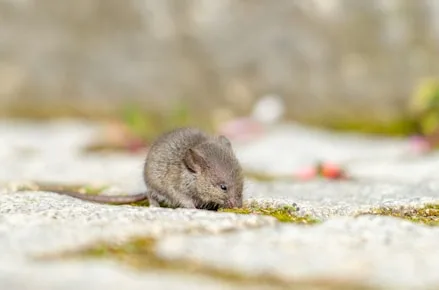Elusive hazel dormice was found in a new forest area, offering a glimmer of hope for the recovery of endangered species in Wales.
Conservationists are celebrating a rare breakthrough after the discovery of a hazel dormouse in Pembrokeshire Coast National Park. The unexpected find has brought renewed optimism for the recovery of this elusive and endangered species, which has suffered significant declines across Britain.
The discovery was made as part of a conservation initiative that saw volunteers setting up nesting boxes in various parts of the park. Mary Chadwick, a park conservationist, explained that the dormouse was found in Nevern woodland, about eight kilometres west of the well-known Pengelli forest, marking a new habitat for the tiny rodent. “We got lucky this year,” Chadwick said, delighted by the find.
Embed from Getty ImagesHazel dormice, recognised by their golden-brown fur, large eyes, and long whiskers, have seen their population plummet by 70% in the UK since the turn of the millennium. In Wales, they are among seven mammals currently listed as vulnerable. Dormice are notoriously shy and difficult to spot, largely due to their nocturnal nature and preference for dense foliage.
A Decade-Long Conservation Effort Yields Success
Historically, dormice had been confined to the ancient oak woodlands of Pengelli and another forest near the Pentre Ifan Neolithic site within the park. Decades of habitat fragmentation had left these locations as the last refuges for the species. This new discovery in Nevern woodland, however, suggests that dormice are slowly expanding their range, hinting at a recovery.
As part of the park’s ongoing conservation strategy, volunteers, including a licensed dormouse expert, placed dozens of nesting boxes throughout the area to help monitor the species. However, Chadwick emphasised that patience is crucial since dormice are slow to adopt new nesting sites if their natural habitat already provides sufficient shelter.
“We were exploring whether populations in known areas were isolated,” Chadwick said, adding that the team had hoped to see dormice venturing into new areas. The sighting in Nevern woodland was, therefore, a welcome confirmation that these populations are not as isolated as once feared.
Conserving Connectivity and Genetic Diversity
Chadwick explained that the presence of dormice in new areas is vital for ensuring genetic diversity. “It gives us hope for the species if it is able to move around the landscape,” she noted. Connecting these populations is essential for long-term survival, as isolated groups can suffer from inbreeding and reduced resilience to environmental changes.
The conservationists are urging local farmers and landowners to adjust their hedgerow management practices. Chadwick highlighted the importance of preserving hedgerows, which serve as natural corridors for dormice to move safely between habitats. “We’re asking them to trim their hedges less enthusiastically, perhaps alternating sides each year. This would be much better for our dormice,” she added.
A Future for Dormice in Wales?
This discovery, though a small victory, is a significant step forward in efforts to save hazel dormice from the brink of extinction. The conservation programme, which also includes efforts to release rehabilitated dormice into the wild, reflects a broader strategy to restore ecological balance in Pembrokeshire’s woodlands.
Researchers are hopeful that with continued support, the dormice population will stabilise and even thrive, thanks to ongoing efforts to link fragmented habitats. The sighting in Nevern woodland serves as a beacon of hope, showing that with concerted conservation efforts, nature can indeed find a way.
For now, the sleepy dormouse, nestled in its newly discovered home, symbolises resilience and the potential for renewal in one of Wales’ most cherished national parks.
